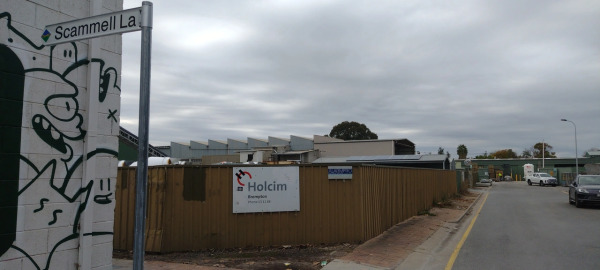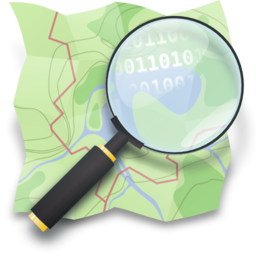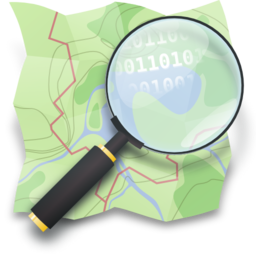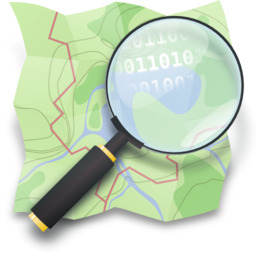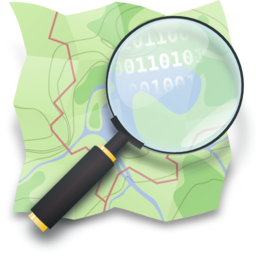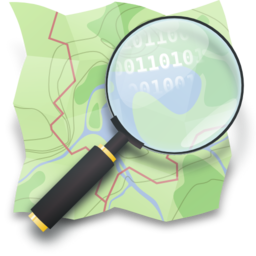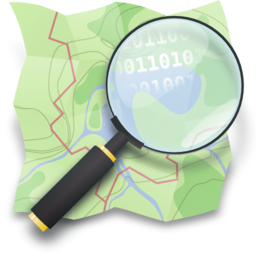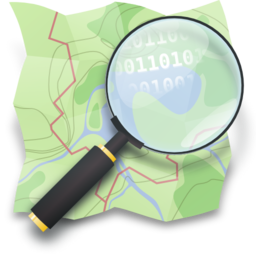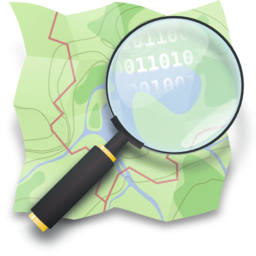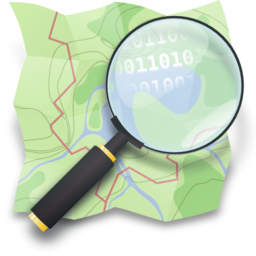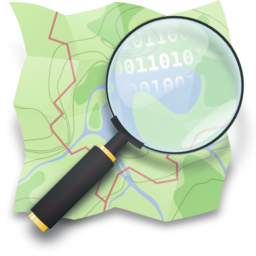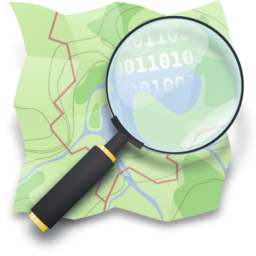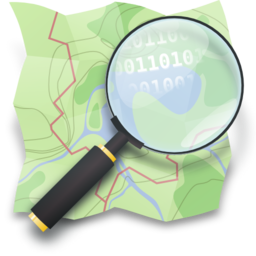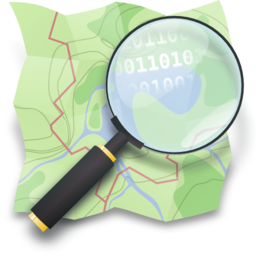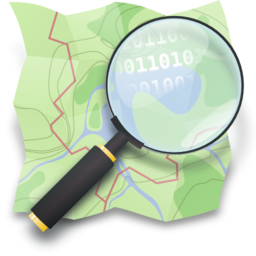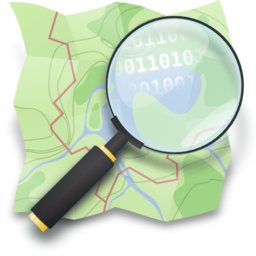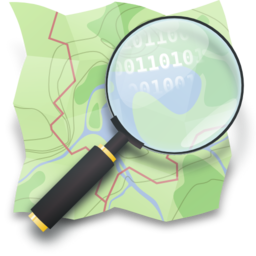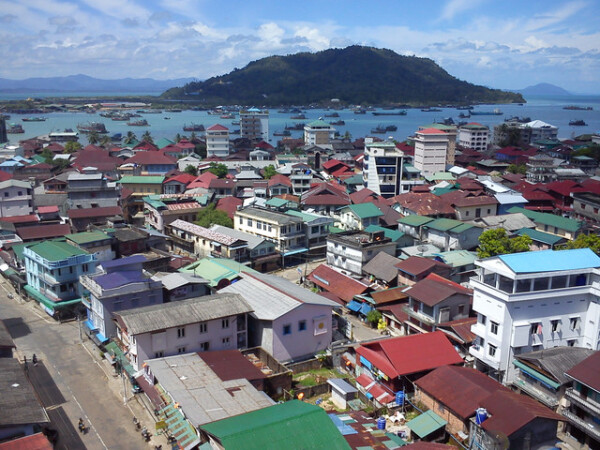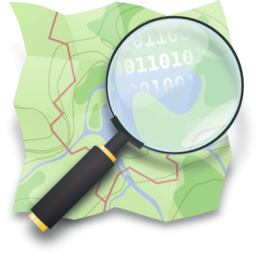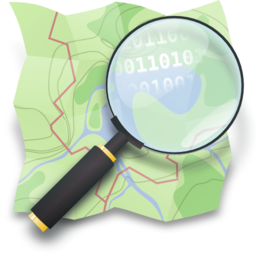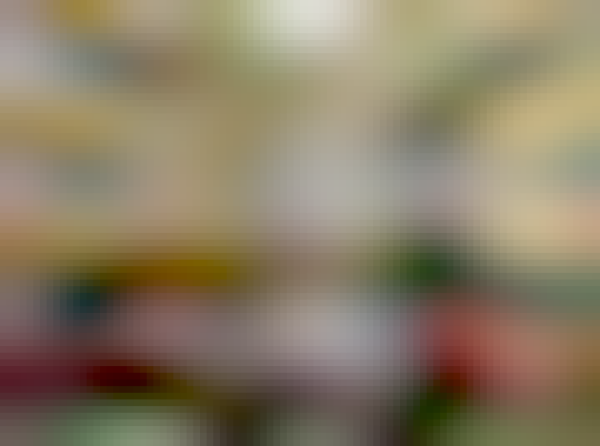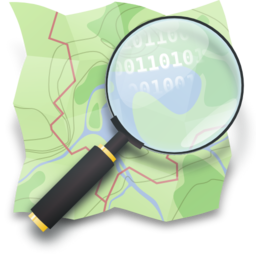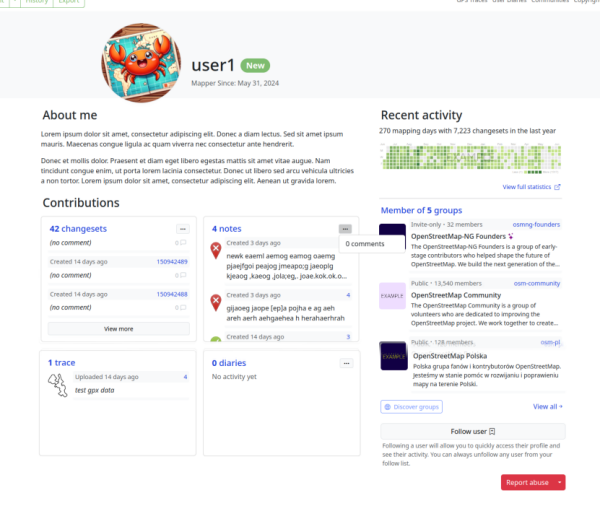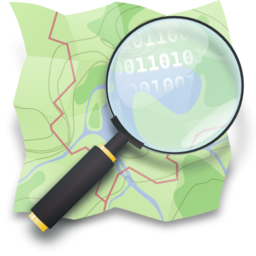OpenStreetMap is a map of the world, created by people like you and free to use under an open license.
asdasd
OpenStreetMap is a map of the world, created by people like you and free to use under an open license.
OpenStreetMap is a map of the world, created by people like you and free to use under an open license.
OpenStreetMap is a map of the world, created by people like you and free to use under an open license.
Walked into town and along seafront down to Lancaster Gardens.
OpenStreetMap is a map of the world, created by people like you and free to use under an open license.
OpenStreetMap is a map of the world, created by people like you and free to use under an open license.
OpenStreetMap is a map of the world, created by people like you and free to use under an open license.
The Creative Commons Zero (CC0) waiver is, in my opinion, the most free way to release open-source software. Unlike licenses that impose conditions on the use, modification, or distribution of software, CC0 allows me to waive all my rights to limit what users can do with the software. It effectively places the work in the public domain. This absolute waiver ensures that the software can be freely used by anyone, for any purpose, in any way. Here’s why I choose CC0 when releasing open source software and why I cannot – and will not – grant permission to use my CC0 software.
Other licenses impose various requirements on using software, such as:
That means:
In some countries, you either cannot legally put software in the public domain, or “it’s complicated,” due to legal concepts that, as an American, I cannot even begin to comprehend. This can complicate or even prevent the dedication of software to the public domain. To address these legal complexities, CC0 attempts to waive as many rights as possible, providing the most free fallback license for jurisdictions where a public domain waiver is not recognized.
It is reasonable that open-source contributors want credit or attribution for their contributions, either for their résumés and career advancement, or simply out of pride. However, the desire for credit should not overshadow the potential benefits of contributing to the common good. For CC0-waivered software, credit is not a mandatory requirement, which can sometimes be perceived as a drawback. But this very aspect also eliminates any barriers for the adoption and use of the software, ensuring that the work can be freely incorporated into other projects without the need for complicated legal considerations.
By waiving all rights, authors of CC0-waivered software make a clear statement: they are contributing their work for the common good, with no expectation of control or credit. This selfless act can set and example to others to contribute similarly, fostering a culture of sharing and collaboration that benefits everyone.
CC0-waivered software prioritizes influence over notability. By allowing unrestricted use and distribution, the software has the potential to reach a wider audience and be utilized in more diverse and creative ways. This broad adoption can lead to greater impact and technological progress, ultimately benefiting the community as a whole. While individual authors might forgo personal recognition, the influence of their work can be far-reaching.
While CC0 grants complete freedom to anyone to use my software without seeking permission, my choice to not explicitly grant permission is to emphasize the point of choosing CC0 in the first place:
By releasing my software under the CC0 waiver, I have released all my rights to the work, including the right to grant or withhold permission for its use. This is not a matter of choice or preference; it is a fundamental aspect of the CC0 waiver. The CC0 waiver is irrevocable, meaning that the freedom it provides to users cannot be undone or restricted by the original author. Therefore, I cannot grant permission because I no longer possess the legal authority to do so.
True software freedom means giving up control, and CC0 allows me to do just that.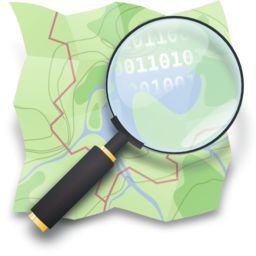
Software freedom
Other licenses impose various requirements on using software, such as:
- Copyleft/viral licensing: Mandates that derivative works also be open-source and follow the same licensing conditions.
- Attribution requirements: Requires giving credit to the original authors in all copies or substantial portions of the software.
- Redistribution conditions: Imposes specific terms on how the software can be redistributed, including the requirement to state changes made to the code.
- Source code disclosure: Requires making the source code available to anyone who receives a copy of the software.
- License compatibility issues: Restrictions that affect the ability to combine the licensed software with other code under different licenses.
- Imposes no obligations for attribution.
- Requires no disclosure of source code.
- Does not mandate any specific licensing for derivative works.
- Places no restrictions on combining CC0-waivered software with other code.
That means:
- Hobbyists can use it.
- Companies that make money can use it.
- People I don’t like can use it.
The closest thing to worldwide public domain
In some countries, you either cannot legally put software in the public domain, or “it’s complicated,” due to legal concepts that, as an American, I cannot even begin to comprehend. This can complicate or even prevent the dedication of software to the public domain. To address these legal complexities, CC0 attempts to waive as many rights as possible, providing the most free fallback license for jurisdictions where a public domain waiver is not recognized.
Credit
It is reasonable that open-source contributors want credit or attribution for their contributions, either for their résumés and career advancement, or simply out of pride. However, the desire for credit should not overshadow the potential benefits of contributing to the common good. For CC0-waivered software, credit is not a mandatory requirement, which can sometimes be perceived as a drawback. But this very aspect also eliminates any barriers for the adoption and use of the software, ensuring that the work can be freely incorporated into other projects without the need for complicated legal considerations.
By waiving all rights, authors of CC0-waivered software make a clear statement: they are contributing their work for the common good, with no expectation of control or credit. This selfless act can set and example to others to contribute similarly, fostering a culture of sharing and collaboration that benefits everyone.
CC0-waivered software prioritizes influence over notability. By allowing unrestricted use and distribution, the software has the potential to reach a wider audience and be utilized in more diverse and creative ways. This broad adoption can lead to greater impact and technological progress, ultimately benefiting the community as a whole. While individual authors might forgo personal recognition, the influence of their work can be far-reaching.
Why I cannot grant permission to use my CC0 software
While CC0 grants complete freedom to anyone to use my software without seeking permission, my choice to not explicitly grant permission is to emphasize the point of choosing CC0 in the first place:
By releasing my software under the CC0 waiver, I have released all my rights to the work, including the right to grant or withhold permission for its use. This is not a matter of choice or preference; it is a fundamental aspect of the CC0 waiver. The CC0 waiver is irrevocable, meaning that the freedom it provides to users cannot be undone or restricted by the original author. Therefore, I cannot grant permission because I no longer possess the legal authority to do so.
True software freedom means giving up control, and CC0 allows me to do just that.

ZeLonewolf's Diary | I won't grant permission to use my CC0 software
OpenStreetMap is a map of the world, created by people like you and free to use under an open license.OpenStreetMap
I started my journey in OSM Mapping contribution in September 2020. I have worked in multiple OSM HOT Tasking projects in ID editor and JOSM. The community has been a blessing for me as it was more engaging and conscious of OSM mapping and having a journey making the world a better place through OSM Mapping.
At the end of December 2023 Open Mapping Hub- Asia Pacific hosted a program call to all active contributors to embark on a journey with AP-Hub of fellowship of active mapping and community engagement with AP-Hub network and OSM community. I passed the exam with joyous remarks. I was selected for Mapping track out of 15 been selected for the Mapping Track of OM Guru Fellowship. There was 3 different track set by AP-Hub, one Mapping track (tasked for mapping), 2nd Validation Track (tasked for validation of OSM Mapping), and 3rd Training track (Tasked for training participants). On first month, we had 100 task mapping in HOT Tasking Manager. It was a rigorous mapping in Philippines, Vanuatu and Micronesia. On 2nd month, we have worked on Everydoor App POI collection. I have roamed around my neighborhood to taking detailed data of the POIs. On the 3rd month March 2024, we worked on Mapillary of 500 images. Then on 4th month April, we worked on QGIS mapping, before and after image of OSM Mapping and 100 mapping tasks in HOT Tasking Manager. On 5th month May 2024, we validated 200 tasks in HOT Tasking Manager.
The entire journey had made me a consistent mapper and having learnt many new applications to contribute to OSM Mapping, I am grateful to AP-hub for the amazing opportunity.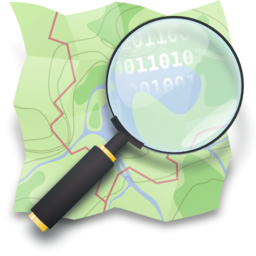
At the end of December 2023 Open Mapping Hub- Asia Pacific hosted a program call to all active contributors to embark on a journey with AP-Hub of fellowship of active mapping and community engagement with AP-Hub network and OSM community. I passed the exam with joyous remarks. I was selected for Mapping track out of 15 been selected for the Mapping Track of OM Guru Fellowship. There was 3 different track set by AP-Hub, one Mapping track (tasked for mapping), 2nd Validation Track (tasked for validation of OSM Mapping), and 3rd Training track (Tasked for training participants). On first month, we had 100 task mapping in HOT Tasking Manager. It was a rigorous mapping in Philippines, Vanuatu and Micronesia. On 2nd month, we have worked on Everydoor App POI collection. I have roamed around my neighborhood to taking detailed data of the POIs. On the 3rd month March 2024, we worked on Mapillary of 500 images. Then on 4th month April, we worked on QGIS mapping, before and after image of OSM Mapping and 100 mapping tasks in HOT Tasking Manager. On 5th month May 2024, we validated 200 tasks in HOT Tasking Manager.
The entire journey had made me a consistent mapper and having learnt many new applications to contribute to OSM Mapping, I am grateful to AP-hub for the amazing opportunity.

Hal_maps's Diary | OM Guru Fellowship Experience and the Journey Beyond
OpenStreetMap is a map of the world, created by people like you and free to use under an open license.OpenStreetMap
OpenStreetMap is a map of the world, created by people like you and free to use under an open license.
Greetings, fellow mappers! I am thrilled to share my journey as an Open Mapping Guru Validation Fellow. This fellowship, organized by the Open Mapping Hub Asia-Pacific, has been an enriching experience filled with learning, collaboration, and significant contributions to the OpenStreetMap (OSM) community.
My journey with OpenStreetMap began back in December 2021 during a training organized by the Geomatics Engineering Students’ Association of Nepal (GESAN). The collaborative spirit of OSM and its mission to create free, up-to-date maps for everyone instantly captivated me. Unlike other mapping services, OSM is a community-driven platform that offers unrestricted use, much like Wikipedia. Till then, I’ve started mapping my way around different parts of Nepal and have since expanded my efforts to encompass the global landscape. Over time, I became an active mapper, regularly contributing to the platform. The more I mapped, the more I realized the importance of accurate and up-to-date data, which led me to the Open Mapping Guru Fellowship. Last December, I learned about the Open Mapping Hub AP’s OMGuru Fellowship from a fellow colleague and luckly I got selected for the Validation track. It’s been an incredible journey so far, and I am thrilled to have made a significant and tangible impact on the broader OSM community.
In early 2024, I enrolled in the Guru Program of the Humanitarian OpenStreetMap Team (HOT) and learned about the OM Guru Fellowship. Intrigued by the Validation track, I applied and was fortunate to be selected. The Validation track focuses on ensuring the accuracy and reliability of map data, which is crucial for disaster response, humanitarian efforts, and other vital uses. The sense of purpose that comes from knowing my work helps create dependable maps for these causes has been deeply fulfilling.
The OM Guru Fellowship was a transformative journey. I learned to use powerful validation tools such as OSMCha, Osmose, OSM Inspector and MapRoulette. These tools helped me conduct thorough quality checks and address errors precisely. Each task presented new challenges, keeping me engaged and continuously improving my skills as a validator. One of the most rewarding aspects of the fellowship was the collaborative environment. Working alongside other passionate mappers and validators from around the world was inspiring. The guidance and support from mentors like Mikko, Dinar, and Honey were invaluable, helping me navigate challenges and grow as a mapper.
The fellowship reinforced the power of collaboration in open mapping. Every validation task and discussion highlighted the collective effort needed to create high-quality maps. It’s humbling to be part of a global network of dedicated individuals working towards the same goal—an accurate and accessible map for everyone. My most significant achievement during the fellowship was improving the reliability and trustworthiness of OpenStreetMap. Every error I corrected and every validated data point contributes to making OSM a valuable tool for communities in need. This journey has taught me the importance of attention to detail, patience, and continuous learning.
The fellowship has had a profound impact on my perspective on open mapping. The skills I gained in problem-solving and critical thinking will be invaluable as I continue my mapping journey. Moreover, the fellowship opened doors to future collaborations with OSM communities worldwide. The connections I made and the knowledge I gained will help foster a more inclusive and comprehensive mapping community.
Lastly, this Fellowship has been an incredible experience, and I am deeply grateful to the Open Mapping Hub Asia-Pacific team for this opportunity. As I continue my journey with OSM, I am committed to using my validation skills to support communities and contribute to a more resilient future for all. This is just the beginning of my story with OpenStreetMap. Happy mapping!
Tags: #OpenMapping #ValidationFellow #HumanitarianMapping #OSM #OpenMappingGuruFellowship #OpenStreetMap #HOT #OMHAP #OMGuru #OSMNepal #GESAN #YouthMappers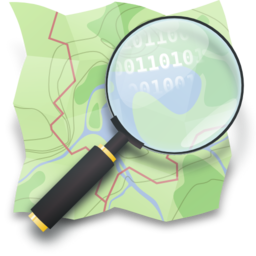
My OSM Journey From Beginner to Advanced Mapper
My journey with OpenStreetMap began back in December 2021 during a training organized by the Geomatics Engineering Students’ Association of Nepal (GESAN). The collaborative spirit of OSM and its mission to create free, up-to-date maps for everyone instantly captivated me. Unlike other mapping services, OSM is a community-driven platform that offers unrestricted use, much like Wikipedia. Till then, I’ve started mapping my way around different parts of Nepal and have since expanded my efforts to encompass the global landscape. Over time, I became an active mapper, regularly contributing to the platform. The more I mapped, the more I realized the importance of accurate and up-to-date data, which led me to the Open Mapping Guru Fellowship. Last December, I learned about the Open Mapping Hub AP’s OMGuru Fellowship from a fellow colleague and luckly I got selected for the Validation track. It’s been an incredible journey so far, and I am thrilled to have made a significant and tangible impact on the broader OSM community.
Becoming a Validation Fellow
In early 2024, I enrolled in the Guru Program of the Humanitarian OpenStreetMap Team (HOT) and learned about the OM Guru Fellowship. Intrigued by the Validation track, I applied and was fortunate to be selected. The Validation track focuses on ensuring the accuracy and reliability of map data, which is crucial for disaster response, humanitarian efforts, and other vital uses. The sense of purpose that comes from knowing my work helps create dependable maps for these causes has been deeply fulfilling.
Fellowship Experience
The OM Guru Fellowship was a transformative journey. I learned to use powerful validation tools such as OSMCha, Osmose, OSM Inspector and MapRoulette. These tools helped me conduct thorough quality checks and address errors precisely. Each task presented new challenges, keeping me engaged and continuously improving my skills as a validator. One of the most rewarding aspects of the fellowship was the collaborative environment. Working alongside other passionate mappers and validators from around the world was inspiring. The guidance and support from mentors like Mikko, Dinar, and Honey were invaluable, helping me navigate challenges and grow as a mapper.
Learnings and Achievements
The fellowship reinforced the power of collaboration in open mapping. Every validation task and discussion highlighted the collective effort needed to create high-quality maps. It’s humbling to be part of a global network of dedicated individuals working towards the same goal—an accurate and accessible map for everyone. My most significant achievement during the fellowship was improving the reliability and trustworthiness of OpenStreetMap. Every error I corrected and every validated data point contributes to making OSM a valuable tool for communities in need. This journey has taught me the importance of attention to detail, patience, and continuous learning.
Impact and Future Directions
The fellowship has had a profound impact on my perspective on open mapping. The skills I gained in problem-solving and critical thinking will be invaluable as I continue my mapping journey. Moreover, the fellowship opened doors to future collaborations with OSM communities worldwide. The connections I made and the knowledge I gained will help foster a more inclusive and comprehensive mapping community.
Lastly, this Fellowship has been an incredible experience, and I am deeply grateful to the Open Mapping Hub Asia-Pacific team for this opportunity. As I continue my journey with OSM, I am committed to using my validation skills to support communities and contribute to a more resilient future for all. This is just the beginning of my story with OpenStreetMap. Happy mapping!
Tags: #OpenMapping #ValidationFellow #HumanitarianMapping #OSM #OpenMappingGuruFellowship #OpenStreetMap #HOT #OMHAP #OMGuru #OSMNepal #GESAN #YouthMappers

Ashim Paudel's Diary | My OMGuru Fellowship Journey Under Validation Track
OpenStreetMap is a map of the world, created by people like you and free to use under an open license.OpenStreetMap
OpenStreetMap is a map of the world, created by people like you and free to use under an open license.
OpenStreetMap is a map of the world, created by people like you and free to use under an open license.
OpenStreetMap is a map of the world, created by people like you and free to use under an open license.
کلینیک ترک اعتیاد بهزیست مشهد قاسم آباد شاهد۶۶ نبش دهنوی۲۲ درمان اعتیاد
OpenStreetMap is a map of the world, created by people like you and free to use under an open license.
OpenStreetMap is a map of the world, created by people like you and free to use under an open license.
OpenStreetMap is a map of the world, created by people like you and free to use under an open license.
I have been deeply tempted to use this. There have been times when I didn’t even tag the disposal not because it slipped my mind, but because “pitlatrine” is wrong.
From the wiki for toilets:disposal=pitlatrine, “waste falls into a lined or unlined pit”. This is a lie. A pit is an unlined hole in the ground. A pit toilet uses an unlined hole in the ground. A lined hole in the ground is a vault and the difference is important to land managers and, I would argue, the end user.
As to land managers, one example would be the United States Forest Service. If an area has over a certain number of visitors a year, they try to supply a toilet facility. If that number is still few enough, a (unlined) pit toilet is sufficient. Over a certain amount, it needs to be a vault. This is due to the waste leaching into the surrounding soil with an unlined system. With sufficient volume, it’s more likely to cause contamination in the area.
When a pit toilet is full, the land manager digs a new hole, moves over whatever construction they’ve got in place to help you stay above ground while you make your deposit, and cover over the old hole. When a vault toilet is full, someone comes to pump that thing out and it stays just where it was before.
For the end user, well, the stories I could tell you about using a pit toilet. The floor of the one in Little Round Valley sagged as I stepped into it. Volunteers had just finished digging the hole and moving the little building over it at Santa Cruz Guard Station as I arrived. Practically smell free throughout the stay! Most of the rest of the backcountry pit toilets in the area don’t actually have full buildings, just 0-3 privacy walls around a topped hole. When not spacious by not having a complete set of walls, they tend to be exceedingly tight. The building of one near Blue Lakes was so tight, it was hard to stand to pull up my pants without opening the door.
I don’t have these kinds of stories about vault toilets. The horse parking one at First Water was getting pumped out when I was there. I’ve got some on how people treat vault toilets, but that’s not about just the toilet itself. They’re a much more uniform item, being a larger construction. Usually they’ve got sufficient room for a wheelchair even if it would be hard to get a chair up the step outside.
I expect there’s a few others thinking as I do. There’s 102 improved_pitlatrine and another 45 blair_ventilated_improved_pitlatrine. No one has gone for vault yet. It’s universally used by the Forest Service and Bureau of Land Management, but that doesn’t make it the UK usage. They are far outweighed by the 65362 uses of pitlatrine, but most of my own uses and some where I have not tagged would be better as vault, at least if we were using American English. (I’m not keen on improved_pitlatrine simply because it doesn’t say how. One (unlined) pit toilet I encountered was outfitted with a lid several decades old that proclaimed itself patented and capable of fitting tightly to prevent flies and smell! Improved, but not meaningfully. On the other hand, vault is very specific to the disposal.)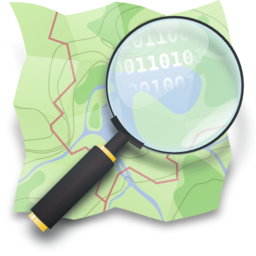
From the wiki for toilets:disposal=pitlatrine, “waste falls into a lined or unlined pit”. This is a lie. A pit is an unlined hole in the ground. A pit toilet uses an unlined hole in the ground. A lined hole in the ground is a vault and the difference is important to land managers and, I would argue, the end user.
As to land managers, one example would be the United States Forest Service. If an area has over a certain number of visitors a year, they try to supply a toilet facility. If that number is still few enough, a (unlined) pit toilet is sufficient. Over a certain amount, it needs to be a vault. This is due to the waste leaching into the surrounding soil with an unlined system. With sufficient volume, it’s more likely to cause contamination in the area.
When a pit toilet is full, the land manager digs a new hole, moves over whatever construction they’ve got in place to help you stay above ground while you make your deposit, and cover over the old hole. When a vault toilet is full, someone comes to pump that thing out and it stays just where it was before.
For the end user, well, the stories I could tell you about using a pit toilet. The floor of the one in Little Round Valley sagged as I stepped into it. Volunteers had just finished digging the hole and moving the little building over it at Santa Cruz Guard Station as I arrived. Practically smell free throughout the stay! Most of the rest of the backcountry pit toilets in the area don’t actually have full buildings, just 0-3 privacy walls around a topped hole. When not spacious by not having a complete set of walls, they tend to be exceedingly tight. The building of one near Blue Lakes was so tight, it was hard to stand to pull up my pants without opening the door.
I don’t have these kinds of stories about vault toilets. The horse parking one at First Water was getting pumped out when I was there. I’ve got some on how people treat vault toilets, but that’s not about just the toilet itself. They’re a much more uniform item, being a larger construction. Usually they’ve got sufficient room for a wheelchair even if it would be hard to get a chair up the step outside.
I expect there’s a few others thinking as I do. There’s 102 improved_pitlatrine and another 45 blair_ventilated_improved_pitlatrine. No one has gone for vault yet. It’s universally used by the Forest Service and Bureau of Land Management, but that doesn’t make it the UK usage. They are far outweighed by the 65362 uses of pitlatrine, but most of my own uses and some where I have not tagged would be better as vault, at least if we were using American English. (I’m not keen on improved_pitlatrine simply because it doesn’t say how. One (unlined) pit toilet I encountered was outfitted with a lid several decades old that proclaimed itself patented and capable of fitting tightly to prevent flies and smell! Improved, but not meaningfully. On the other hand, vault is very specific to the disposal.)

valhikes's Diary | toilets:disposal=vault
OpenStreetMap is a map of the world, created by people like you and free to use under an open license.OpenStreetMap
As a proud OSM contributor since the start of 2023, I’ve been busy mapping my way around Jalpaiguri and the North Bengal region, leaving a trail of improved data in my wake. It’s been an incredible journey so far, and I’m thrilled to have made a tangible impact on the OSM community. But, I didn’t stop there.
Last December, I learned about the Open Mapping Hub AP’s OMGuru Fellowship from a fellow OSM India member, and I just had to apply. Long story short, I got accepted, and it’s been quite great ever since.
Through the OMGuru Fellowship, I’ve had the chance to dive deeper into the world of OSM and learn about an array of tools and techniques for contributing to and improving OSM data and sharpen up my skills using JOSM. Specialising in Validation Track, I’ve honed my skills in ensuring the accuracy and quality of data – a crucial aspect of mapping that’s often overlooked. But it’s not just about validating HOT TM tasks; I’ve also acquired the skills to further map my region, add quality data, and even use it for research and analysis (cue the HOT x DataCamp Scholarship).
It’s been an incredible experience, and I’m excited to see where my newfound expertise takes me next. The OMGuru Fellowship has been a game-changer, and I’d like to extend my gratitude to HOT and APHub for the opportunity to have been a part of it, and to Mikko, Dinar and Honey for their guidance (esp. Mikko and Dinar, you guys have helped me out a lot and take on questions which I now realise were REALLY dumb :’D).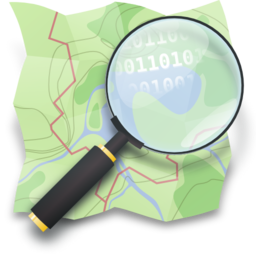
Last December, I learned about the Open Mapping Hub AP’s OMGuru Fellowship from a fellow OSM India member, and I just had to apply. Long story short, I got accepted, and it’s been quite great ever since.
Through the OMGuru Fellowship, I’ve had the chance to dive deeper into the world of OSM and learn about an array of tools and techniques for contributing to and improving OSM data and sharpen up my skills using JOSM. Specialising in Validation Track, I’ve honed my skills in ensuring the accuracy and quality of data – a crucial aspect of mapping that’s often overlooked. But it’s not just about validating HOT TM tasks; I’ve also acquired the skills to further map my region, add quality data, and even use it for research and analysis (cue the HOT x DataCamp Scholarship).
It’s been an incredible experience, and I’m excited to see where my newfound expertise takes me next. The OMGuru Fellowship has been a game-changer, and I’d like to extend my gratitude to HOT and APHub for the opportunity to have been a part of it, and to Mikko, Dinar and Honey for their guidance (esp. Mikko and Dinar, you guys have helped me out a lot and take on questions which I now realise were REALLY dumb :’D).

NLBRT's Diary | My experience w/ OMGuru Fellowship
OpenStreetMap is a map of the world, created by people like you and free to use under an open license.OpenStreetMap
OpenStreetMap is a map of the world, created by people like you and free to use under an open license.
OpenStreetMap is a map of the world, created by people like you and free to use under an open license.
Niruta Neeupane's Diary | Closing Images for Open Mapping Fellowship
OpenStreetMap is a map of the world, created by people like you and free to use under an open license.
OpenStreetMap is a map of the world, created by people like you and free to use under an open license.
OpenStreetMap is a map of the world, created by people like you and free to use under an open license.
OpenStreetMap is a map of the world, created by people like you and free to use under an open license.
OpenStreetMap is a map of the world, created by people like you and free to use under an open license.
It amazes me how much of my city mapping is already well kept and documented. I did not realize Trivandrum had so many OpenStreetMap enthusiasts till now!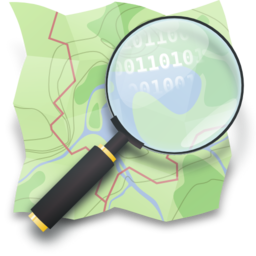

Abishek Jayan's Diary | Day 2 of Updating Entries around my Neighbourhood
OpenStreetMap is a map of the world, created by people like you and free to use under an open license.OpenStreetMap
Together, we can make the world a happier place by adding verified information to OpenStreetMap!
OpenStreetMap is a map of the world, created by people like you and free to use under an open license.
OpenStreetMap is a map of the world, created by people like you and free to use under an open license.
OpenStreetMap is a map of the world, created by people like you and free to use under an open license.
OpenStreetMap is a map of the world, created by people like you and free to use under an open license.
OpenStreetMap is a map of the world, created by people like you and free to use under an open license.
Using OpenStreetMap for the first time after meeting with one of the core devs on meetup.com! Decided to start small and add/edit some entries around my neighbourhood.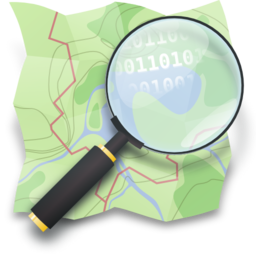

Abishek Jayan's Diary | First ever Map Contribution
OpenStreetMap is a map of the world, created by people like you and free to use under an open license.OpenStreetMap
The recent wave of vandalism is very demotivating. It is genuinely painful to see billions of hours of work being destroyed. I don’t know about others but I am going to take a break from mapping until this issue is resolved. If at some point we are going to globally revert several months worth of work - why even try.
Reverting vandalism after the fact doesn’t scale when faced with organised and motivated abuse. The rate vandalism is ramping up now means it has only just started. Once streamlined, it is trivial to scale it by a factor of a thousand or more.
My proposals:
PS. I don’t know if abusers are Ukrainians or Russians but it doesn’t matter. Not to OSM and not to the war. Slava Ukraini!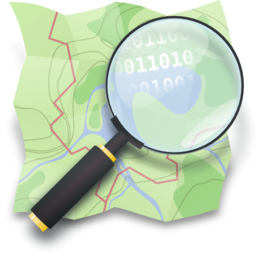
Reverting vandalism after the fact doesn’t scale when faced with organised and motivated abuse. The rate vandalism is ramping up now means it has only just started. Once streamlined, it is trivial to scale it by a factor of a thousand or more.
My proposals:
As an emergency temporary measure, please immediately block registration of new users and edits by new users. This is until less blunt methods are implemented, which should be a priority.
Implement moderation of new users’ edits for the first few (1?) edits. Users should be informed this is about fighting deliberate abuse and it has nothing to do with the quality of their edits.
Throttle the number of map changes per changeset, the rate changesets are being accepted and the size of the changeset bounding box. The limits should be gradually reduced and removed based on the number number of changes or a similar metric.
… anything else?
PS. I don’t know if abusers are Ukrainians or Russians but it doesn’t matter. Not to OSM and not to the war. Slava Ukraini!

ndrw6's Diary | Stronger anti-vandalism measures, please!
OpenStreetMap is a map of the world, created by people like you and free to use under an open license.OpenStreetMap
OpenStreetMap to projekt społecznościowy, oparty na dobrowolnym i wolicjonalnym wkładzie jego uczestnika. Czyli na czym? Na dobrej woli i na chęci poświęcenia tej woli na rzecz dokonania wkładu względem projektu. OpenStreetMap, podobnie jak Wikipedia, opiera się na “szaleńcach” (z punktu widzenia ekonomii kapitalistycznej i koncepcji “homo oeconomicus”), którzy dają coś (a właściwie: pracę) od siebie na rzecz społeczności (społeczeństwa) bez oczekiwania zysku w rozumieniu wynagrodzenia pieniężnego. Co ich ku temu motywuje? Mogę od siebie podać kilka takich czynników, które są moim “motorem”:
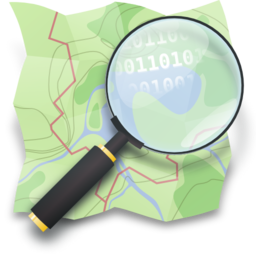
Dysponowanie mapą zmniejsza poczucie lęku i niepewności przed danym miejscem. Czy gdzieś wyjeżdżasz na wakacje, a może przeprowadzasz się na stałe w nowe miejsce zamieszkania - lubisz wiedzieć czego można się spodziewać w docelowym miejscu (lub na trasie do niego). Czy i gdzie znajdę lekarza, ulubiony sklep spożywczy, czy miejsce jest zazielone, czy raczej jest siedliskiem betonu i wszechobecnych budynków wokół? Czy jak będę chciał odpocząć, albo coś zwiedzić - to gdzie, jak daleko?
Dysponowanie mapą pomaga - i Tobie i wszystkim tym, którzy mogą chcieć Ci pomóc w określonej sytuacji. Straż pożarna szybciej dojedzie do pożaru, karetka pogotowia szybciej będzie mogła udzielić Ci pomocy, kurier czy listonosz sprawniej dostarczą to, na co czekasz.
Tworzenie map jest pożyteczne społecznie, zwłaszcza gdy mapa ta nie jest tylko Twoim prywatnym projektem i na Twój prywatny użytek, lecz z chwilą prac nad nią udostępniasz jej wyniki (jak to ma właśnie w przypadku projektu OSM). Nic tak nie dodaje pozytywnych emocji (a więc motywacji) jak myśl i fakt, że “to, co robisz, ma sens” (ile i ilu z nas, na co dzień, wykonuje pracę niemającą jakiegokolwiek sensu i pożytku dla społeczności, w której żyjemy?).
Tworzenie map ma charakter natychmiastowy - nie musisz czekać na to, aż Twoja praca zostanie przez kogoś zrecenzowana, zaakceptowana, “przeznaczona do użytku” - z chwilą publikacji swojego wkładu jest on dostępny dla każdego zainteresowanego. Masz tym samym poczucie realnego sprawstwa (tak rzadkiego w społeczeństwach, w których żyjemy), a i miło się robi gdy widzi się efekt swoich działań.


Piotr Strębski's Diary | Co mnie motywuje do prac nad mapami w projekcie OSM?
OpenStreetMap is a map of the world, created by people like you and free to use under an open license.OpenStreetMap
The greatest motivation for my mapping journey was to map those numerous people who do not exist on a global footprint and are overlooked. It’s not just about filling the blank spaces but validating their existence, recognizing these people and making sure that no one is left behind. Validation of the data makes sure that each data we create on OpenStreetMap (OSM) is accurate enough to create an inclusive and complete world. Through this diary, I share my enormous journey of these 5 months showcasing my motivation, challenges and triumphs that I encountered in maintaining the accuracy and quality of data in OSM.
“Everything starts from a dot” - Wassily Kandinsky The journey from a beginner mapper to being an advanced mapper, trainee, a trainer has brought me here where I stand as a Validator Fellow from being a validator at HOT Global Validator. The opportunity provided by Open Mapping Hub Asia Pacific as an OM Guru Validation Fellow has not only boosted my validating skills but also opened the door to explore more new, powerful and qualitative tools to increase the speed as well as the quality of the validation. Validating tools like OSMCha, OSMose, Maproulette and many more have created an environment where we see the quality of the data through the lens of the mappers and make sure that they are adding quality data into the existing database of OpenStreetMap. There’s a saying “Practice makes men perfect”. I believe that practice along with patience and motivation makes men perfect and you have to be patient and there must be someone to motivate you while you’re mapping to embark on your mapping journey. The constant motivation and praises from mentors like Dinar, Mikko, and Honey have made this journey look great and fruitful.
The fellowship offered collaboration between many mappers and validators around the world and learn from them as well. Also, it provided an opportunity to get engaged within various OSM communities and network around the world and see the work they have been doing to maintain the quality of OSM data and get motivated from that. The fellowship doesn’t end here but opens the door to future collaboration between OSM chapters, networks and communities of Nepal with other communities around the world through learning, sharing and helping each other.
For the past 2 decades, we have seen the impact of the data in OSM has created over the people around the world which makes it the most useful and trustworthy open geospatial data library. It’s always in the hands of valuable and dedicated mappers to add more map data and maintain the accuracy and quality of the data. Some of the major takeaways from this fellowship are: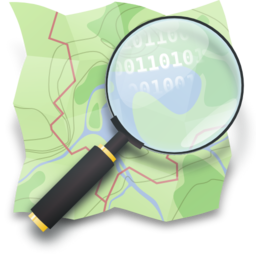
Learning the Ropes
“Everything starts from a dot” - Wassily Kandinsky The journey from a beginner mapper to being an advanced mapper, trainee, a trainer has brought me here where I stand as a Validator Fellow from being a validator at HOT Global Validator. The opportunity provided by Open Mapping Hub Asia Pacific as an OM Guru Validation Fellow has not only boosted my validating skills but also opened the door to explore more new, powerful and qualitative tools to increase the speed as well as the quality of the validation. Validating tools like OSMCha, OSMose, Maproulette and many more have created an environment where we see the quality of the data through the lens of the mappers and make sure that they are adding quality data into the existing database of OpenStreetMap. There’s a saying “Practice makes men perfect”. I believe that practice along with patience and motivation makes men perfect and you have to be patient and there must be someone to motivate you while you’re mapping to embark on your mapping journey. The constant motivation and praises from mentors like Dinar, Mikko, and Honey have made this journey look great and fruitful.
Collaboration and Community
The fellowship offered collaboration between many mappers and validators around the world and learn from them as well. Also, it provided an opportunity to get engaged within various OSM communities and network around the world and see the work they have been doing to maintain the quality of OSM data and get motivated from that. The fellowship doesn’t end here but opens the door to future collaboration between OSM chapters, networks and communities of Nepal with other communities around the world through learning, sharing and helping each other.
Impact and Take Aways
For the past 2 decades, we have seen the impact of the data in OSM has created over the people around the world which makes it the most useful and trustworthy open geospatial data library. It’s always in the hands of valuable and dedicated mappers to add more map data and maintain the accuracy and quality of the data. Some of the major takeaways from this fellowship are:
The fellowship taught you to harness the collaborative power of Citizen-Science and Voluntered Geographic Information System (VGIS) to create and maintain the quality geodatabase of the whole world.
It helped me gain the idea of problem-solving and critical thinking to solve the data quality issues that arose during the validation process.
It has increased my perception of the value and importance of open and quality geospatial data.
Finally, it has opened my door to get connected with like minds around the world and see the future collaborations and communications.

Gaurav Parajuli's Diary | Quality Matters: My Journey as an Open Mapping Guru Validation Fellow.
OpenStreetMap is a map of the world, created by people like you and free to use under an open license.OpenStreetMap
set up JOSM, and intend to use it for most of my future changesets.
OpenStreetMap is a map of the world, created by people like you and free to use under an open license.
OpenStreetMap is a map of the world, created by people like you and free to use under an open license.
OpenStreetMap is a map of the world, created by people like you and free to use under an open license.
OpenStreetMap is a map of the world, created by people like you and free to use under an open license.
Greetings! Welcome to the first entry of my diary. Here I’ll be sharing my experience as an OMGuru, i.e., Open Mapping Guru.
Open Mapping Guru is a training program for next generation individuals who are seriously interested in community driven Open Mapping, just kidding, it’s for anyone who wants to help the community by mapping.
There are a plethora of skills and softwares/interfaces to be learnt here, but more importantly meeting a lot of people of the same mindset is a boon.
For starters, I never got to enroll this with the others as a batch. I got to know about it after two months passed when two people left two seats open. But, the people working in OSM AP Hub are gems. They guided me in every way possible. I could cover all the necessary requirements in a very short amount of time, earning the skills in the way.
When I first started, I was reluctant.. thinking how can this mountain of tasks be covered within such a miniscule amount of time? But our guide from OSM AP Hub curated the tasks so well that I started enjoying it.
Then the Climate Change Challenge event started where we had to pair up as a team.i love it how they gamify the events and we learn the skills in the process. The person who came up with this idea is a genius.
I can’t fathom how it ended so soon. I’m so glad that I could get this opportunity. I determine to enroll again if they permit me, moreover help other aspirants get enrolled in the process.
Thank you for such patience. I’m really grateful.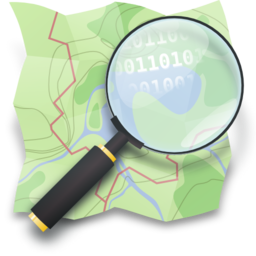
Open Mapping Guru is a training program for next generation individuals who are seriously interested in community driven Open Mapping, just kidding, it’s for anyone who wants to help the community by mapping.
There are a plethora of skills and softwares/interfaces to be learnt here, but more importantly meeting a lot of people of the same mindset is a boon.
For starters, I never got to enroll this with the others as a batch. I got to know about it after two months passed when two people left two seats open. But, the people working in OSM AP Hub are gems. They guided me in every way possible. I could cover all the necessary requirements in a very short amount of time, earning the skills in the way.
When I first started, I was reluctant.. thinking how can this mountain of tasks be covered within such a miniscule amount of time? But our guide from OSM AP Hub curated the tasks so well that I started enjoying it.
Then the Climate Change Challenge event started where we had to pair up as a team.i love it how they gamify the events and we learn the skills in the process. The person who came up with this idea is a genius.
I can’t fathom how it ended so soon. I’m so glad that I could get this opportunity. I determine to enroll again if they permit me, moreover help other aspirants get enrolled in the process.
Thank you for such patience. I’m really grateful.

thedarklord_d's Diary | OMGuru training with Climate Change Challenge
OpenStreetMap is a map of the world, created by people like you and free to use under an open license.OpenStreetMap
OpenStreetMap is a map of the world, created by people like you and free to use under an open license.
OpenStreetMap is a map of the world, created by people like you and free to use under an open license.
Depending on the zoom level, the CycleOSM Layer is corrupted with a large number of false straight roads. I’m looking at a region near Angers, France.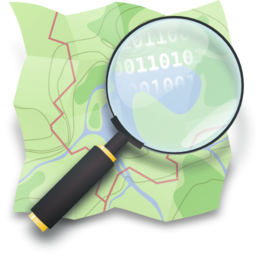

GeorgeRYoung's Diary | CycleOSM Layer is clogged with false roads
OpenStreetMap is a map of the world, created by people like you and free to use under an open license.OpenStreetMap
Someone is littering openstreetmap with streets that do not exist. A Russian hacker is the cause and one other person.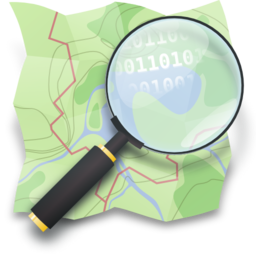

Maps Man's Diary | Illegal activity and spamming
OpenStreetMap is a map of the world, created by people like you and free to use under an open license.OpenStreetMap
